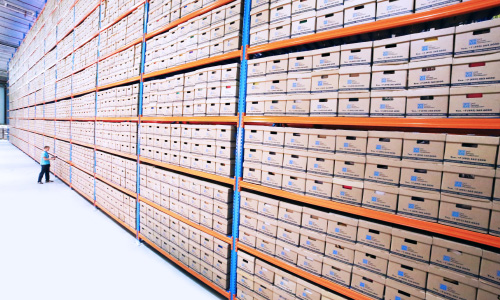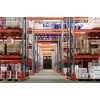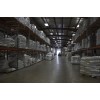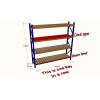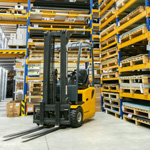Pallet Racking
Pallet racking is a storage system designed to organize and hold palletized goods efficiently, using vertical space in warehouses and distribution centers. It enhances accessibility and maximizes storage capacity.
Pallet racking is a highly efficient and versatile storage solution designed to optimize the use of vertical space in warehouses, distribution centers, and other storage facilities. It consists of a framework of upright frames and horizontal beams that create multiple levels of shelving to store palletized goods. This system allows for easy organization, accessibility, and management of inventory by keeping items off the floor and within reach.
Pallet racking systems come in various types, such as selective racking, drive-in racking, push-back racking, and pallet flow racking, each suited for different storage needs. For instance, selective racking provides direct access to every pallet, while drive-in racking allows for high-density storage by enabling forklifts to enter the racking structure. Push-back racking uses a system of nested carts to store pallets, and pallet flow racking relies on gravity-fed rollers for high-throughput operations.
Constructed from durable materials like steel, pallet racking is customizable and adaptable to various industrial and commercial requirements. It can support heavy loads, ensure efficient use of space, and improve workflow by enabling faster retrieval and storage of goods. Whether used in small-scale operations or large warehouses, pallet racking is a cost-effective solution for maximizing storage capacity and maintaining an organized environment.
Pallet racking specifications can vary depending on the type and intended use, but here are some general details:
- Material: Typically made from high-strength steel for durability and load-bearing capacity.
- Load Capacity: Varies by design, but each beam level and upright frame has specific weight limits. For example, some systems can support thousands of kilograms per level.
- Beam Length: Commonly ranges from 1.8 to 3.6 meters, depending on the storage requirements.
- Upright Height: Can range from 2 to over 10 meters, depending on the warehouse's vertical space.
- Beam Deflection: Maximum deflection is often limited to L/180, where "L" is the beam length.
- Safety Features: Includes locking mechanisms for beams, safety pins, and optional wire mesh decking for added stability.
- Customization: Configurations can be tailored for selective, drive-in, push-back, or pallet flow racking systems.
For more precise specifications, it's best to consult the manufacturer or supplier, as they can provide details tailored to your specific needs.

